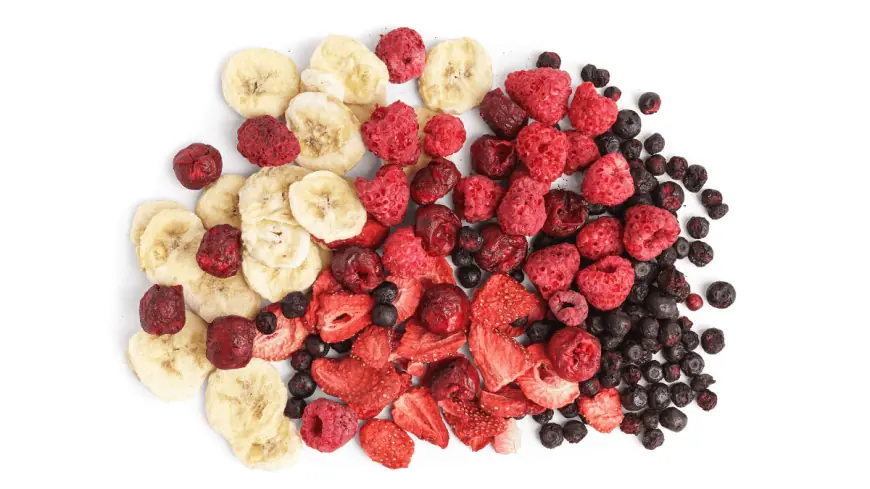Freeze-Dried Foods: Convenience, Nutrition, and Market Growth Trends
Freeze-drying, also known as lyophilization, is a process that removes moisture from food while retaining its structure, flavor, and nutritional content.

The freeze-dried food market has gained significant attention worldwide, driven by changing consumer lifestyles, the need for convenience, and rising awareness about healthy food alternatives.
Freeze-drying, also known as lyophilization, is a process that removes moisture from food while retaining its structure, flavor, and nutritional content.
This technique extends shelf life and ensures portability, making it highly popular among busy consumers, outdoor enthusiasts, and even in emergency food supplies.
Market Drivers
One of the key factors fueling the growth of this market is the increasing demand for ready-to-eat and convenient food products. With urbanization and hectic work schedules, consumers are looking for food options that are quick to prepare yet nutritious. Freeze-dried foods fit this requirement by offering easy rehydration while maintaining quality.
Additionally, the growing interest in health and wellness has boosted the demand for products that preserve natural nutrients. Unlike traditional drying methods, freeze-drying helps retain vitamins, minerals, and flavors, making these foods appealing to health-conscious consumers.
Product Segmentation
The freeze-dried food market can be categorized into several product segments:
-
Fruits and Vegetables: Used widely in smoothies, cereals, snacks, and baking.
-
Meat, Poultry, and Seafood: Popular in camping meals, military rations, and long-term storage foods.
-
Dairy Products: Freeze-dried cheese, yogurt, and milk powders are gaining popularity among travelers and fitness enthusiasts.
-
Prepared Meals: Complete ready-to-eat meal packs are increasingly favored by busy professionals, defense organizations, and adventure travelers.
Distribution Channels
The market is expanding across various distribution channels:
-
Supermarkets and Hypermarkets: Offering wide visibility and consumer access.
-
Convenience Stores: Targeting quick purchases and impulse buyers.
-
Online Retail: Gaining momentum due to rising e-commerce adoption, doorstep delivery, and wide product availability.
-
Specialty Stores: Focusing on health-oriented and premium products.
Regional Insights
The freeze-dried food market has shown strong penetration in developed regions, where consumers are more aware of convenient and premium food solutions. Emerging economies are also experiencing growing demand, fueled by increasing disposable incomes and exposure to global dietary trends.
Key Trends
-
Adventure and Outdoor Activities: Growing participation in camping, trekking, and hiking has boosted demand for lightweight, nutrient-rich meals.
-
Emergency Preparedness: Freeze-dried food is increasingly stocked for disaster relief, military use, and survival kits.
-
Clean Label and Organic Products: Consumers prefer products without artificial additives, leading to innovations in organic freeze-dried offerings.
-
Technological Advancements: Innovations in freeze-drying technology are reducing production costs and improving product quality.
Future Outlook
The freeze-dried food market is poised for significant growth as consumers continue to prioritize convenience, nutrition, and long shelf life. With rising interest in sustainable and clean-label food production, manufacturers are expected to focus on eco-friendly packaging, organic sourcing, and innovative product varieties. E-commerce will also play a pivotal role in expanding market reach, making freeze-dried foods accessible to a broader consumer base.
The freeze-dried food market is evolving rapidly, driven by lifestyle changes, health consciousness, and demand for long-lasting food products. As innovation continues, the sector is expected to see strong opportunities across diverse consumer segments, from daily nutrition to emergency preparedness and outdoor adventures.
What's Your Reaction?
 Like
0
Like
0
 Dislike
0
Dislike
0
 Love
0
Love
0
 Funny
0
Funny
0
 Angry
0
Angry
0
 Sad
0
Sad
0
 Wow
0
Wow
0

















































